 Like frogs, toads are amphibians. They differ from most frogs because they have dry skin, warts, crests behind the eyes, and shorter legs. Toads crawl, rather than moving in short jumps like frogs. Toads also have parotoid glands, which produce a poisonous secretion that helps the toad defend itself from predators. This substance, called a bufotoxin, can cause death in small animals and allergic reactions in humans. Toads lays their spawn in long strings around aquatic plants. The tadpoles that hatch contain toxins that make them unpleasant for predators to eat, allowing them to survive in deep ponds containing fish, which would eat the tadpoles of frogs. After several months of growth and development the tadpoles sprout limbs and undergo metamorphosis into tiny toads. The juveniles emerge from the water and remain largely terrestrial for the rest of their lives. Toads have camouflage. If they’re brown or green, they can blend into their surroundings and escape detection. If they're brightly coloured, they warn predators to stay away because they’re poisonous. Toads also puff up their bodies in an attempt to look bigger and inedible. Toads mainly feed on slugs, snails and other invertebrates, but larger toads have been known to eat worms and grass snakes, and even mice. The large cane toads will eat anything they can fit in their mouths. Toads hibernate over winter, often under log piles, stones or even in old flower pots! 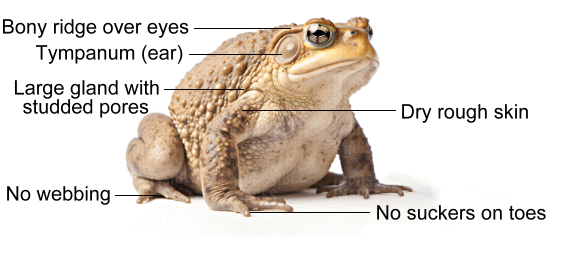 The smallest North American toad is the oak toad, which is only 3.3 centimetres long. Cane toads are the largest toads; they can be as much as 23 centimetres in length. One massive cane toad caught in Australia, nicknamed 'Toadzilla', pictured below (centre), was described as being the size of a small dog! 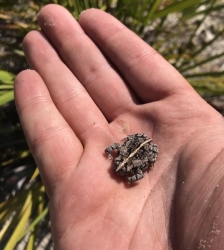 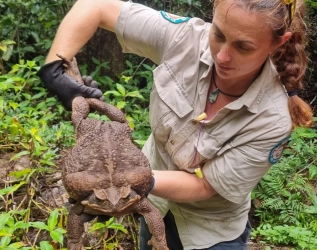 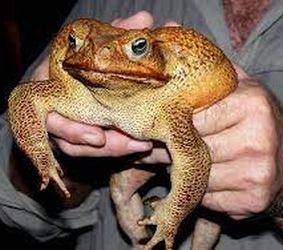 ABOVE: Oak toad, 'Toadzilla', and another cane toad American Toads are common throughout much of the eastern United States and Canada. Wetland breeding sites include shallow ponds, marshes, and slow-moving streams. Toads will call primarily to attract mates, but they also actively search for females by calling at breeding sites. Females tend to choose males with more 'intense' calls, ones that have higher pulse rates and/or longer duration. 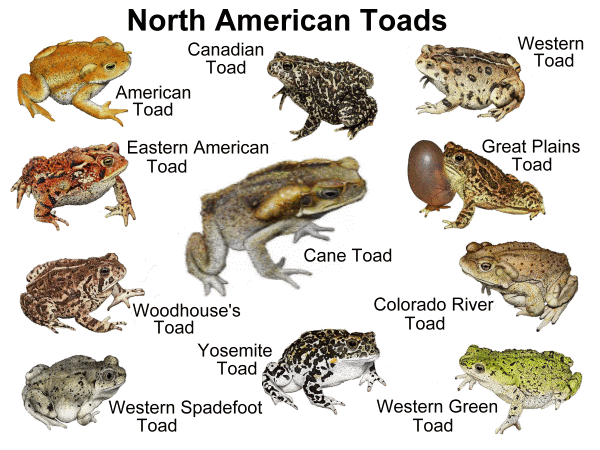 |